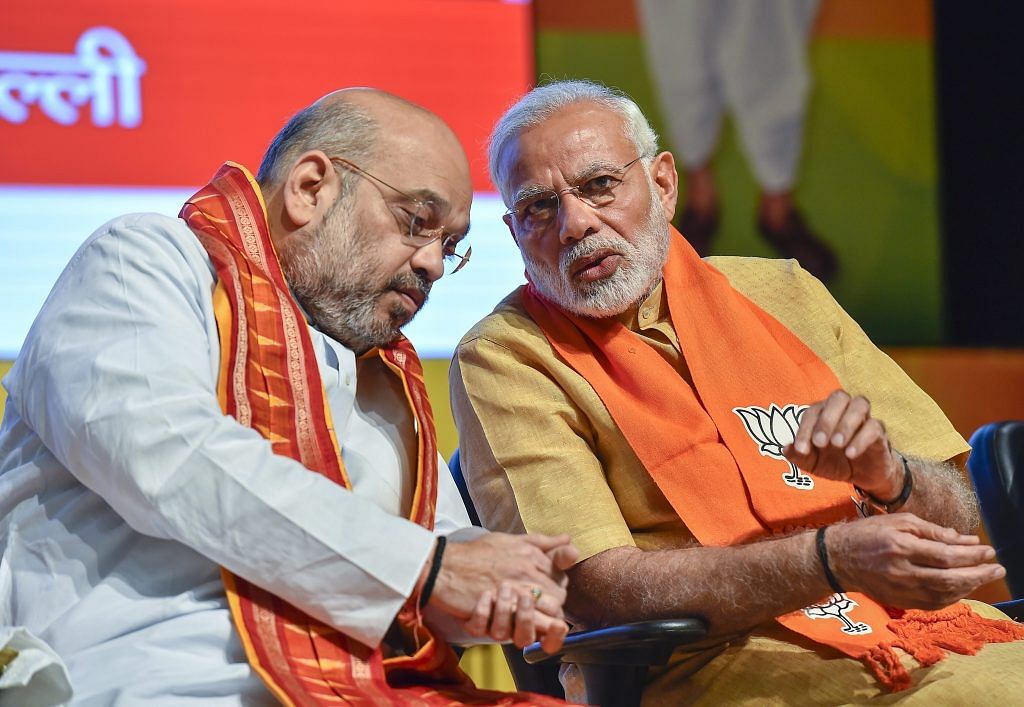The panel, expected to submit its report next week to the President, has sub-categorised 5,000-odd castes.
New Delhi: Ahead of the 2019 Lok Sabha polls, the Bharatiya Janata Party’s effort to woo Other Backward Classes (OBCs) is set to get a fresh lease of life, as the expert committee looking into the sub-categorisation of OBCs has finalised its report.
ThePrint has learnt that the report is likely to be submitted to the President next week.
OBCs comprise about 45 per cent of the country’s population, and are entitled to 27 per cent reservation in government jobs and certain higher education institutions run by the government.
The term of the committee headed by former Delhi High Court chief justice G. Rohini ends on 31 July.
The sub-categorisation of OBCs is likely to bring to the fore non-dominant OBCs who are believed to have a meager presence in government jobs. Doing this would prevent dominant castes such as Yadavs from monopolising the benefits of reservation.
Politically, the move could split the OBC vote, affecting coalition calculations in key states. Both in the 2014 Lok Sabha and 2017 Uttar Pradesh assembly elections, the consolidation of non-Yadav OBC voters led to massive mandates for the BJP.
What the committee has done
The five-member committee, set up by the Centre on 2 October last year, was initially granted 12 weeks to finish its task, but has been granted two extensions since.
“We have prepared the report. We have met with state commissions and governments — who are the main stakeholders in this exercise — several times. Since one of our members is not available, the report could not be submitted,” a member of the committee said.
Also read: Eye on 2019, BJP dangles quota carrot to bring disgruntled castes back into the fold
The committee has pored over voluminous data on the hiring of members from among OBCs in all central government departments, PSUs, banks and other financial institutions and admissions to higher educational institutions since the Narendra Modi government came to power in 2014.
The panel has undertaken the humungous task of sub-categorising 5,000-odd castes in the central OBC list to ensure a “more equitable distribution” of opportunities in central government jobs and educational institutions.
The Supreme Court has repeatedly called for data-backed assessment of castes to include them under OBC. In 2015, striking down the previous UPA government’s move to include Jats under the OBC category, the SC had said that rather than including “(a) self-proclaimed socially backward class”, the government must discover such backward class through a scientific assessment.
The committee is also likely to set out ‘scientific criteria’ for a caste to be considered ‘most backward’ under the larger OBC category. States like Bihar, Karnataka have already identified a ‘most backward’ category within OBCs.
What the states have been doing
While the committee was examining the issue, several BJP-ruled states have been evolving their own affirmative action formulae for these communities.
On 2 July, the Vasundhara Raje-led Rajasthan government approved 1 per cent reservation for Gurjars and four other communities — the nomadic Banjara, Gadia-Lohar, Raika and Gadariya tribes — over and above the existing 21 per cent OBC quota in the state. The move came after the BJP’s defeat in the Alwar and Ajmer Lok Sabha bypolls in January this year.
Also read: Amit Shah asks BJP leaders to give suggestions on how to strengthen party and woo Dalits
In Uttar Pradesh, following the bypoll defeats for the BJP in Gorakhpur, Phulpur and Kairana, the Yogi Adityanath government formed a four-member panel to review the inequity of caste distribution under the 27 per cent OBC quota.
